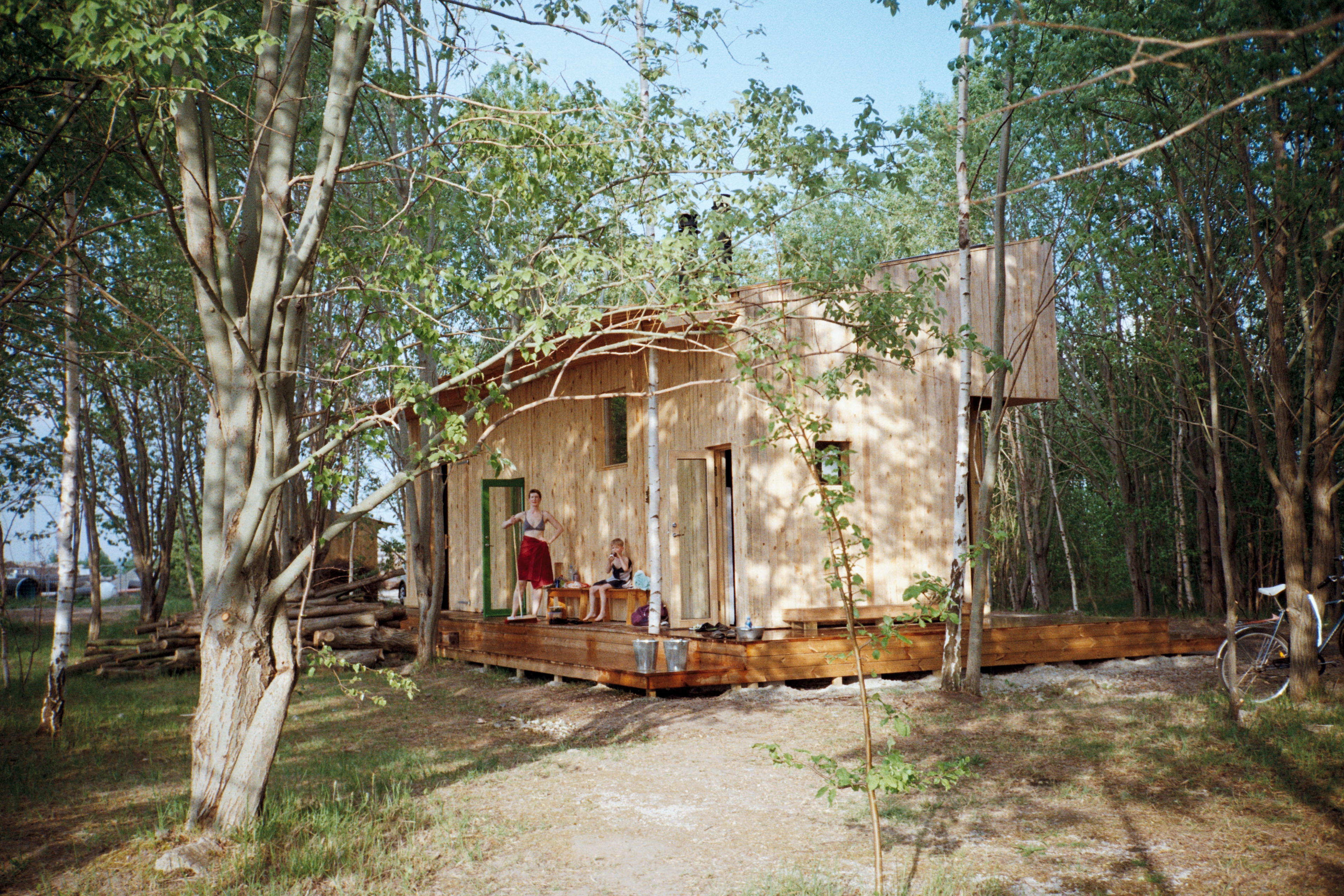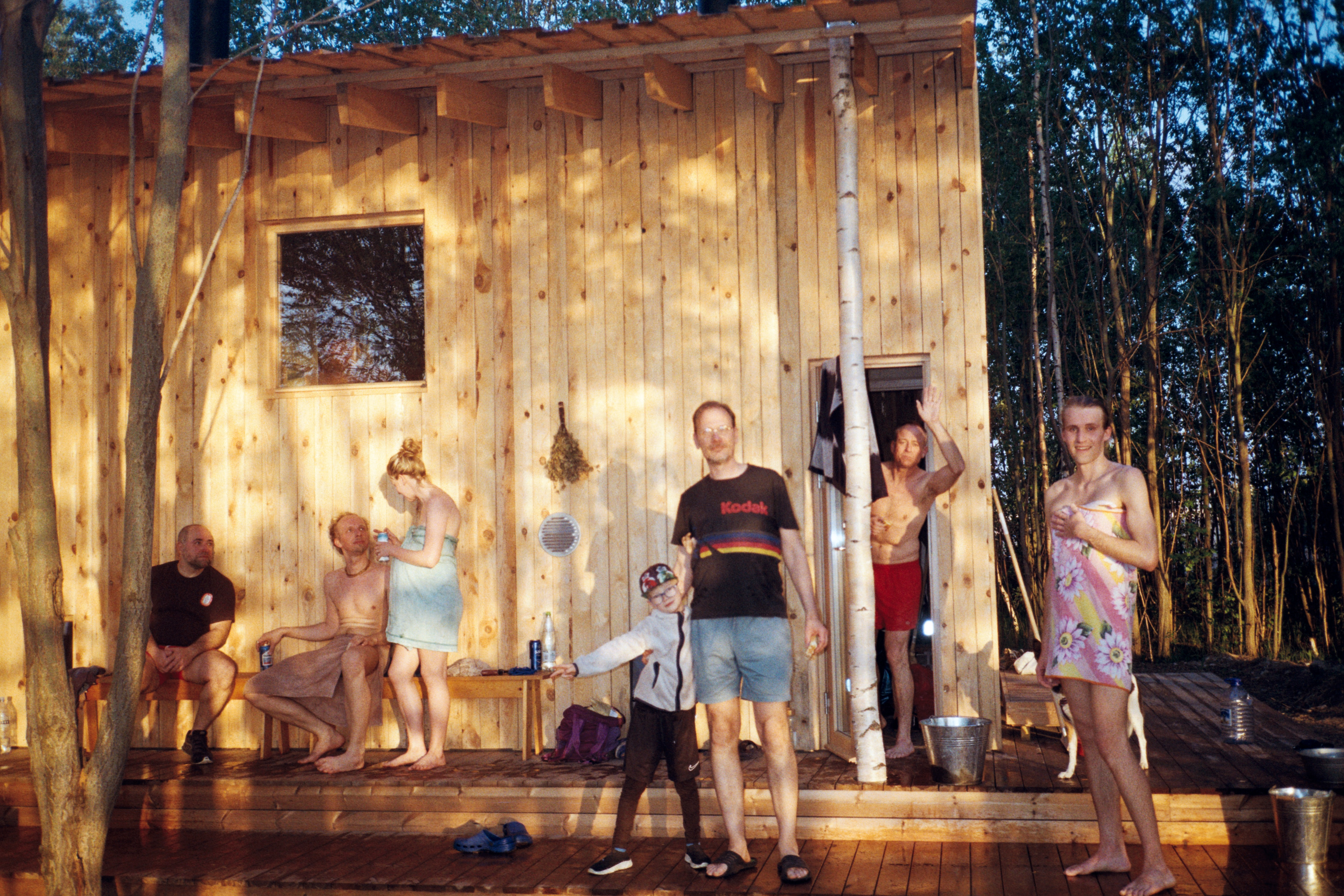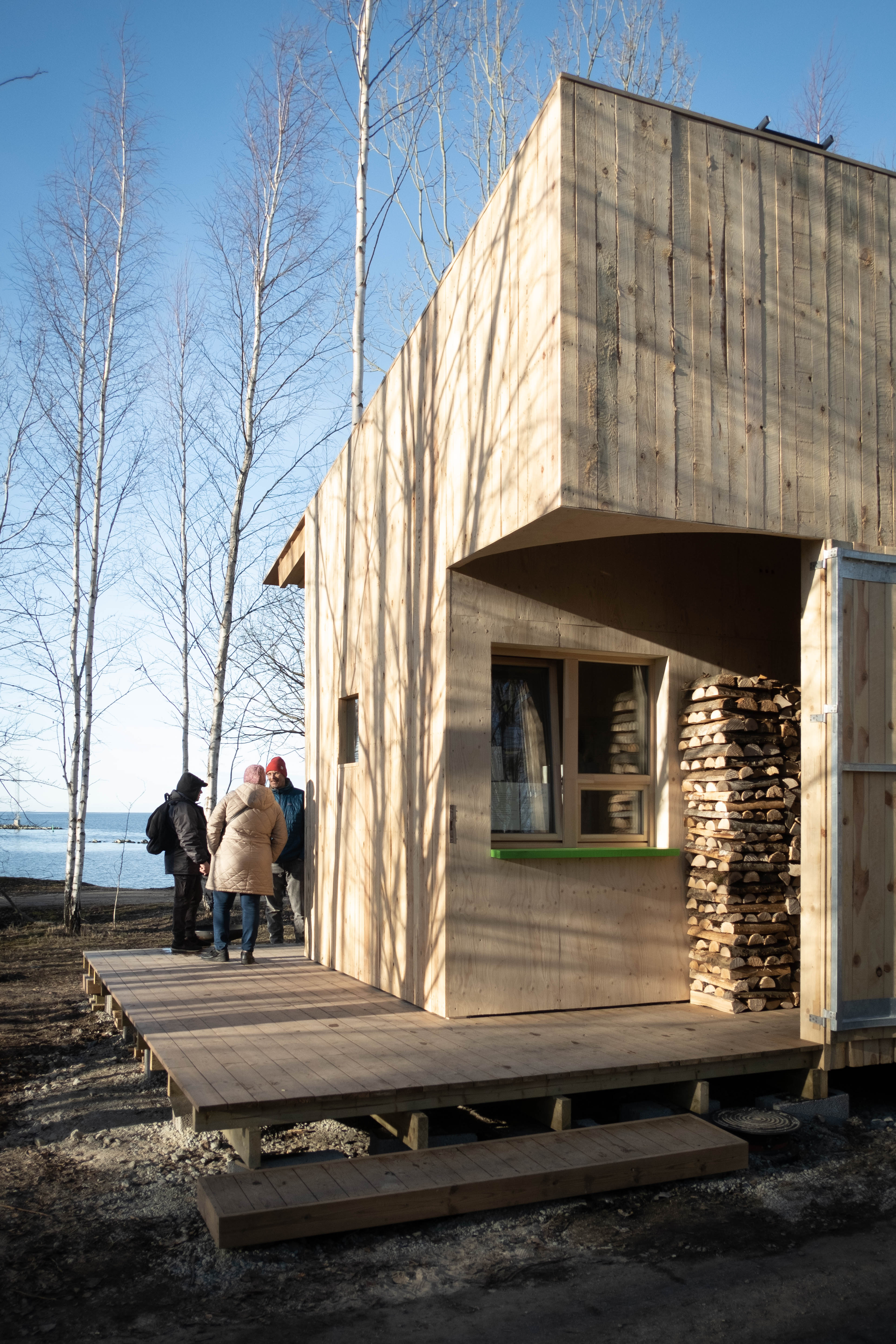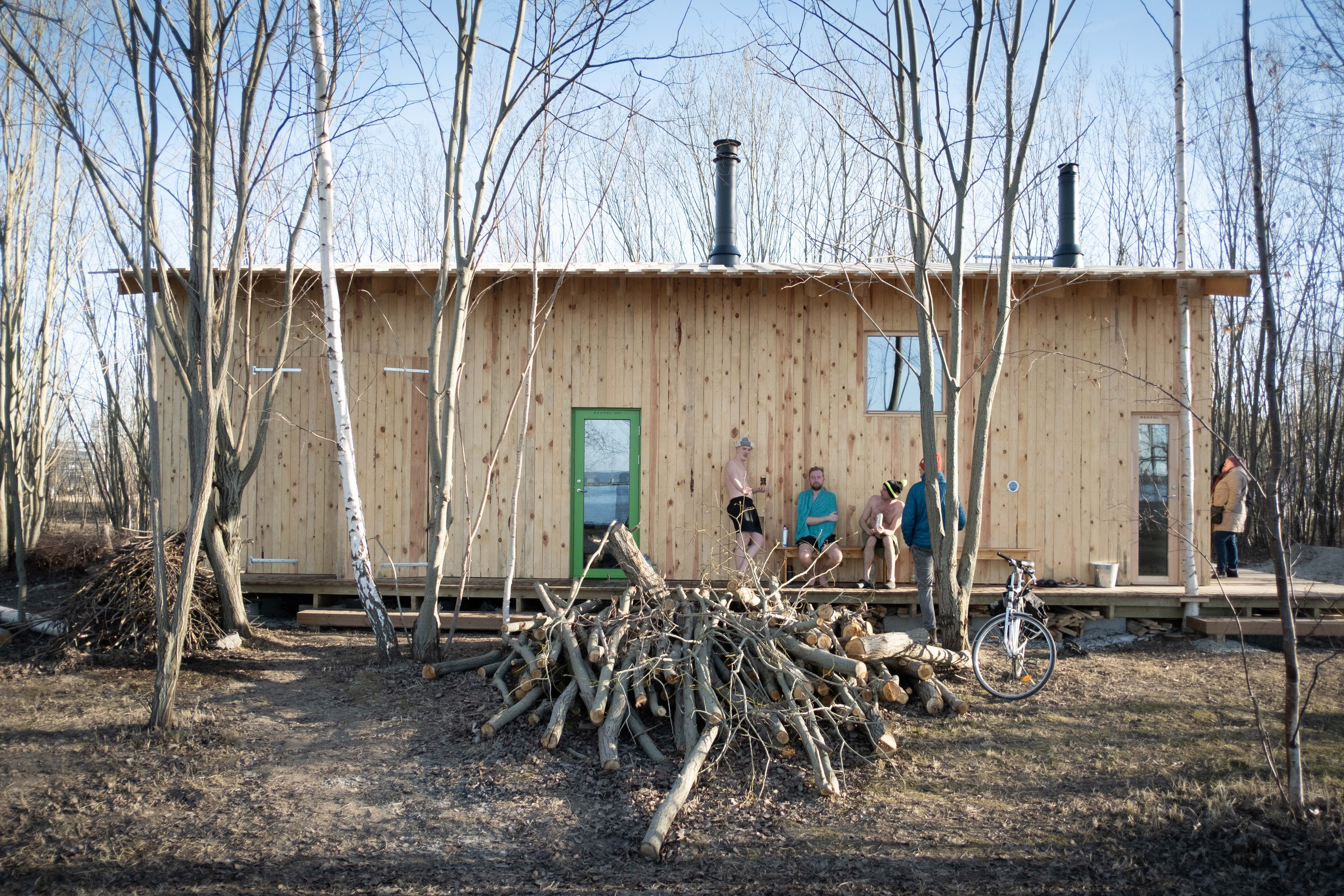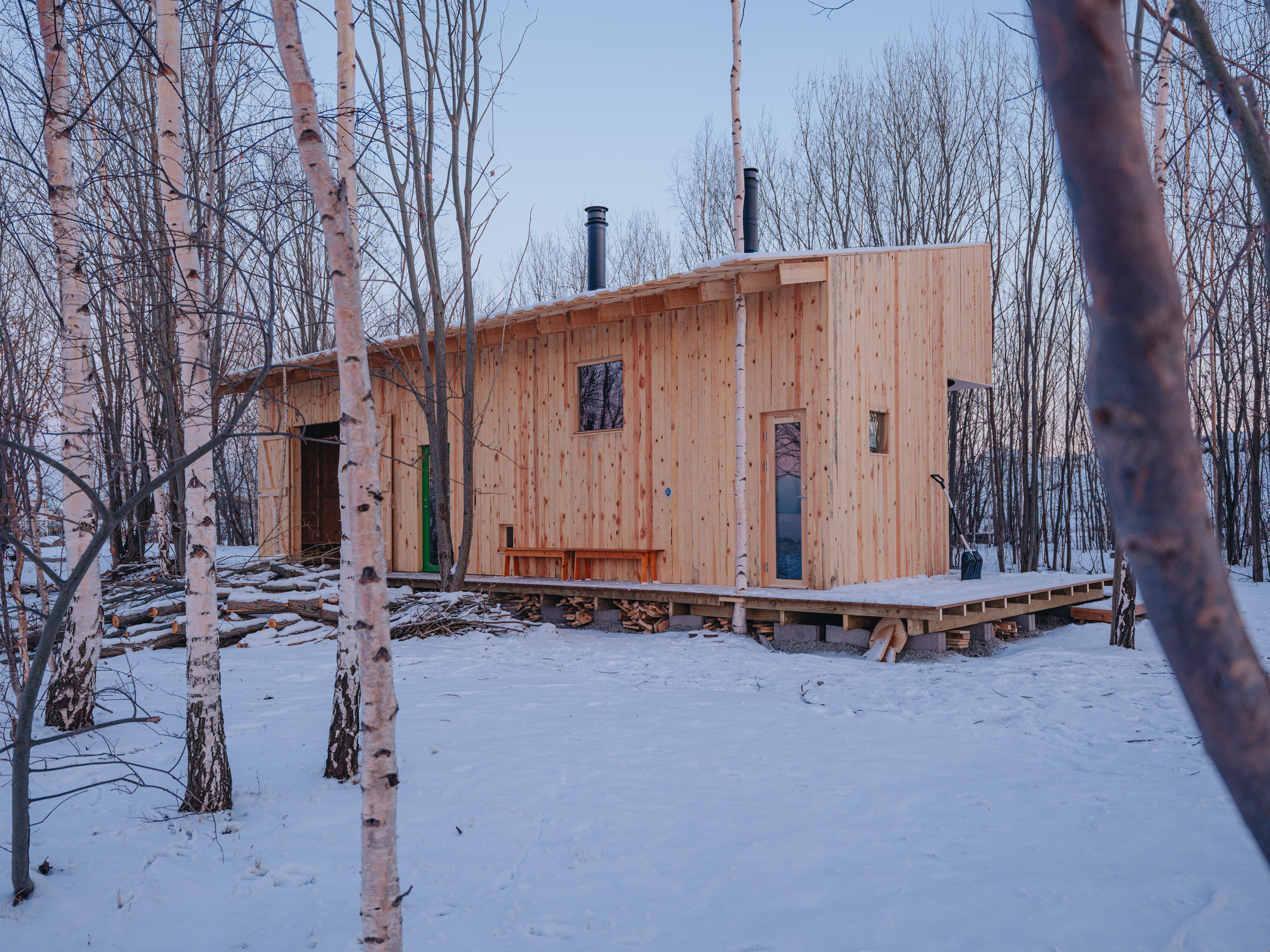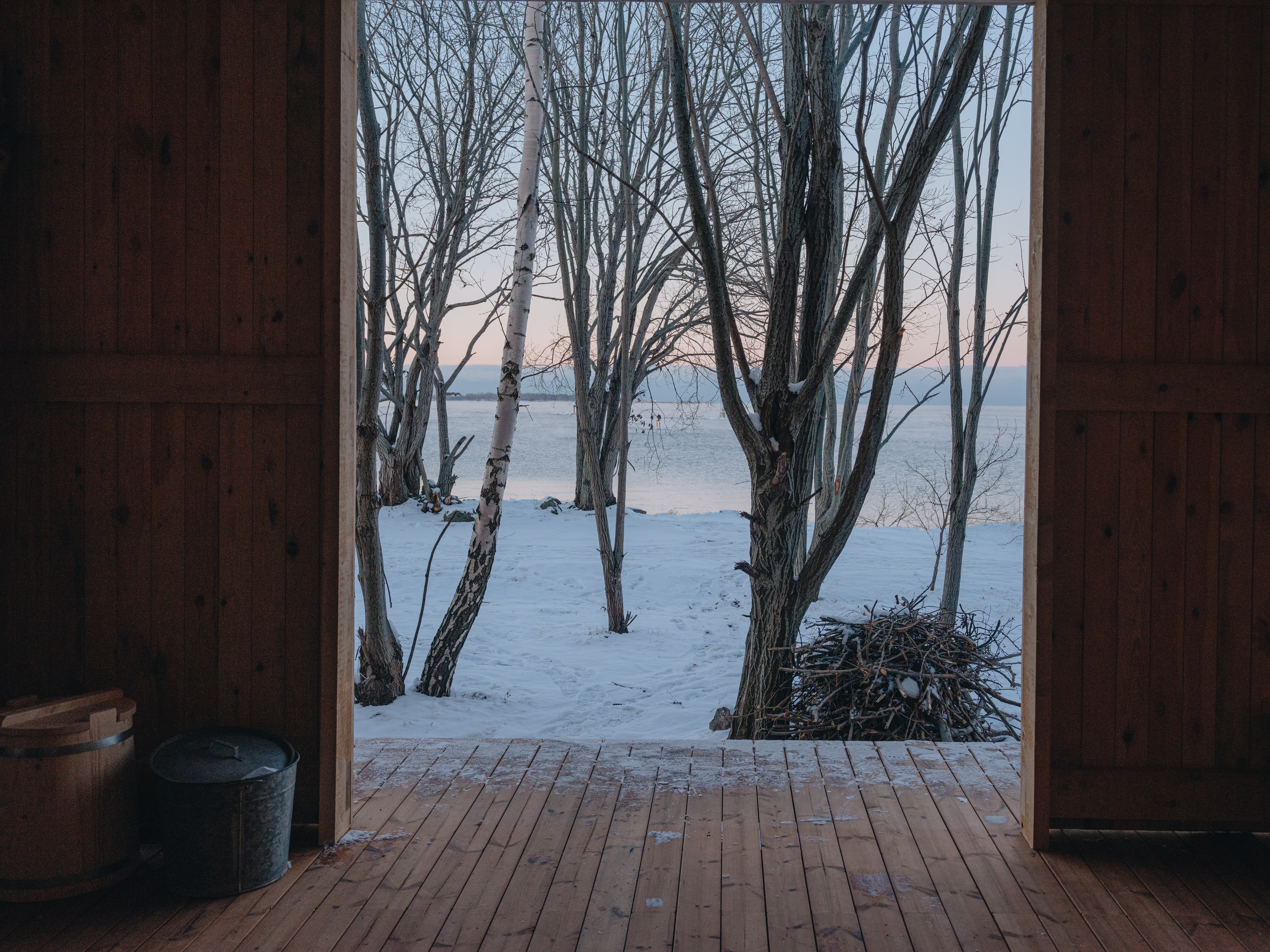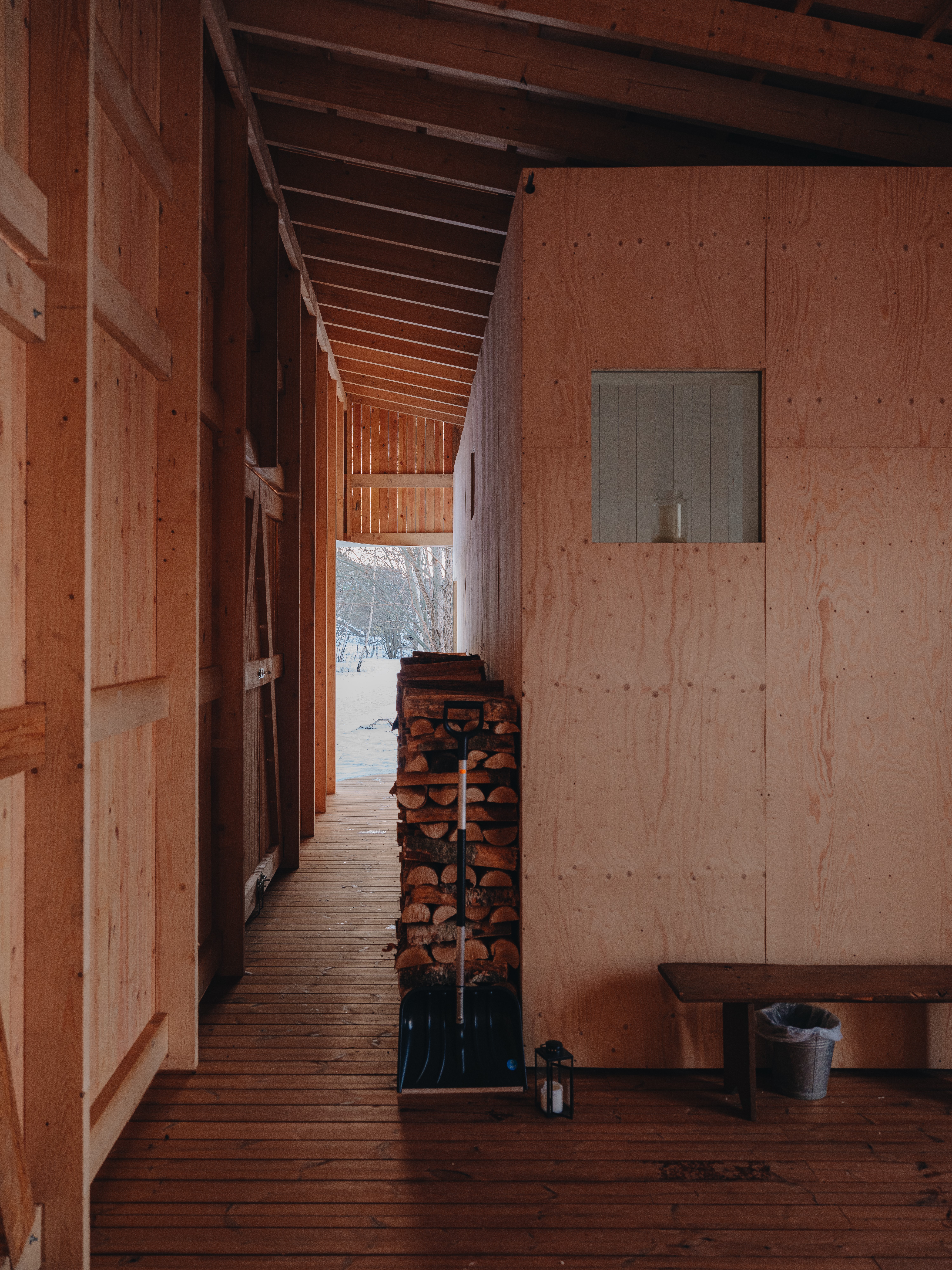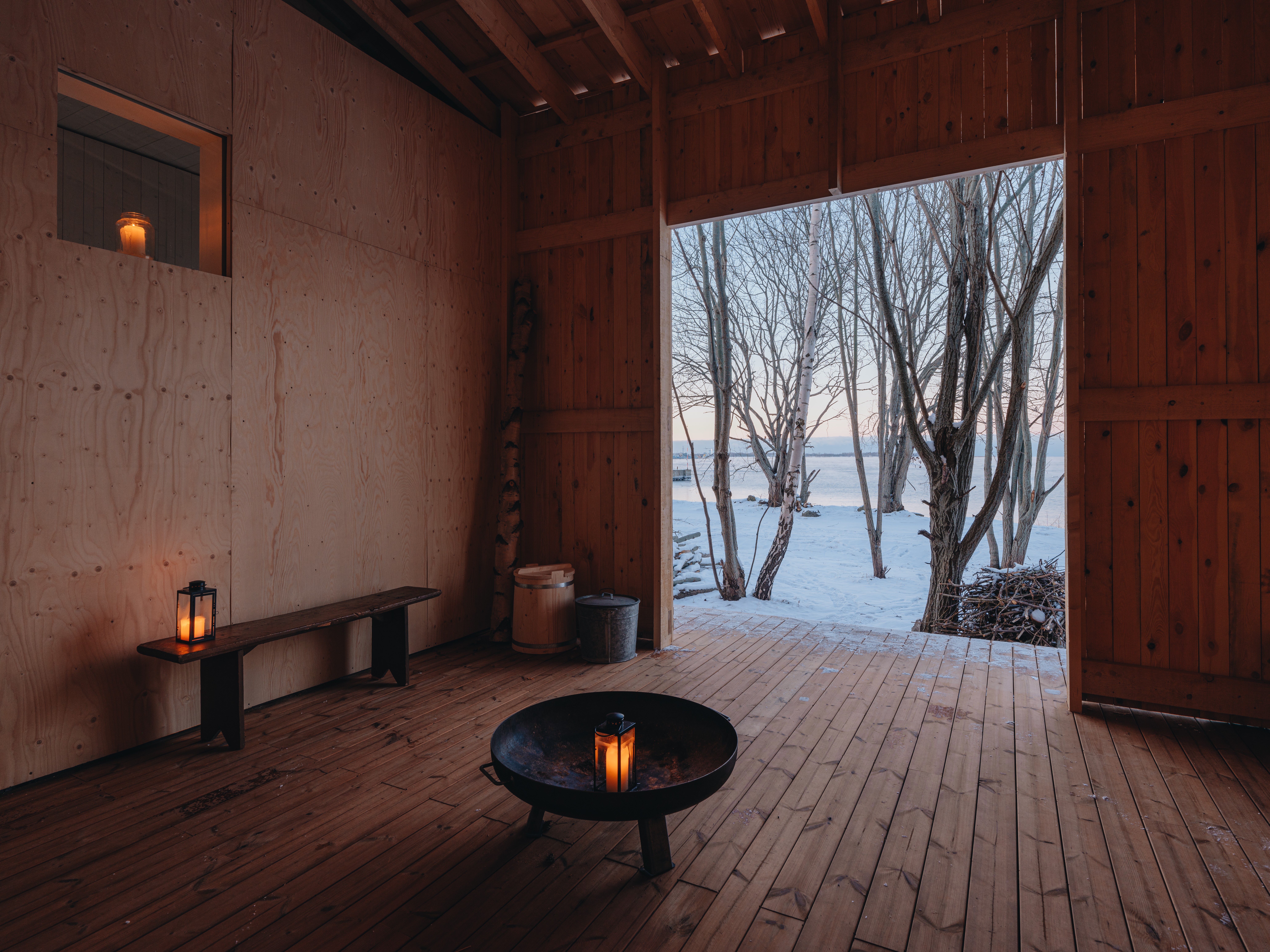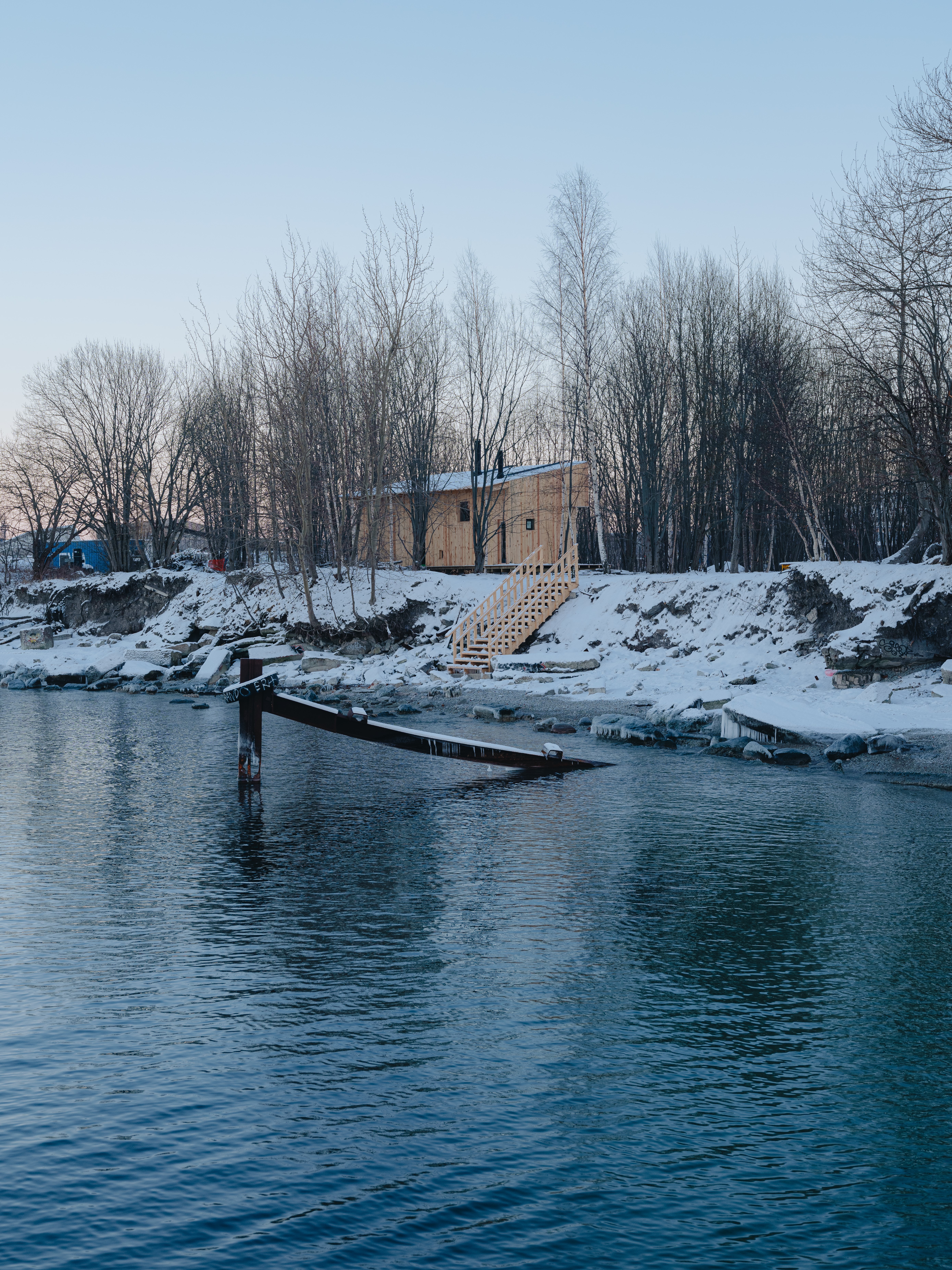Regaining a sense of belonging
Logi Sauna
{Empty}
The Logi sauna is a wood-fired public sauna by the sea in Tallinn, Estonia, built on the initiative of citizens and run by volunteers. This simple, yet esthetic and functional building has turned out to have a big impact - as a safe, non-judgemental place with strong somatic experiences it has succeeded in bringing together people of all walks of life, and it is chaniging on how the ever commerzializing sea-side of Tallinn is seen and used.
Estonia
Local
Tallinn.
Though the sauna is a small building in a certain location, it brings together both locals and visitors from all over the world.
Though the sauna is a small building in a certain location, it brings together both locals and visitors from all over the world.
Mainly urban
It refers to a physical transformation of the built environment (hard investment)
Yes
2023-12-15
No
No
No
As a representative of an organisation
Logi Saun is a simple public sauna in the centre of Tallinn, by the sea, built on a citizens' initiative. The processes of designing and building the sauna, as well as its day-to-day management, have been collective, and the authors of the project are also sauna owners who heat the sauna three times a week during regular opening hours with the help of volunteers. Every third week the queer community holds their own sauna day.
Bringing together a range of sauna experiences and expertise, the result is a wood-fuelled, sea-curing space with exactly as little of everything as possible and as much as necessary. The sauna has no water or electricity, refreshing sea water and candles to ward off the darkness. From the lounge, you have a view through the trees to the sea. The landscape around the sauna has been minimally disturbed, with a birch tree growing through the roof of the sauna house.
The sauna was established because us, the founders, wanted to, first, themselves run a sauna and bring balance to their daily jobs, but also, second, because they felt there was a place like this missing in Tallinn. We all grew up with going to the sauna on a regular basis, either at our grandmother’s country house or at the urban saunas that have mostly been closed by now. The new trend of spas and water parks doesn’t offer the same, down to earth, somatic experience. Also, these places don’t foster creation of a community. Hence the idea was born to build by ourselves a place that fills this gap. And we are happy to say that based on the people the place has attracted and the feedback we get from the customers (of whom many have quickly become regulars) we did tap into a gap. We are told that it has changed for them what Tallinn as a place is and how one lives here; that it has provided them with a like-minded community; it has changed how they see then still derelict seaside and its future; and of course, the experience changes their days.
Bringing together a range of sauna experiences and expertise, the result is a wood-fuelled, sea-curing space with exactly as little of everything as possible and as much as necessary. The sauna has no water or electricity, refreshing sea water and candles to ward off the darkness. From the lounge, you have a view through the trees to the sea. The landscape around the sauna has been minimally disturbed, with a birch tree growing through the roof of the sauna house.
The sauna was established because us, the founders, wanted to, first, themselves run a sauna and bring balance to their daily jobs, but also, second, because they felt there was a place like this missing in Tallinn. We all grew up with going to the sauna on a regular basis, either at our grandmother’s country house or at the urban saunas that have mostly been closed by now. The new trend of spas and water parks doesn’t offer the same, down to earth, somatic experience. Also, these places don’t foster creation of a community. Hence the idea was born to build by ourselves a place that fills this gap. And we are happy to say that based on the people the place has attracted and the feedback we get from the customers (of whom many have quickly become regulars) we did tap into a gap. We are told that it has changed for them what Tallinn as a place is and how one lives here; that it has provided them with a like-minded community; it has changed how they see then still derelict seaside and its future; and of course, the experience changes their days.
community
somatic experience
alternative public space
collaboration
quality
If shovelling firewood into the stove is argauble in terms of sustainability, then we believe that by bringing people together the place is strong on social sustainability. Also, it's quite common in Estonia to have a private sauna in your country-house or even your urban apartment. We hope the reduce the need for using those, and getting more effect with just one stove.
The building doesn't have running water or electricity. Water for the stove adn for cleaning is brought by volunteers - which is quite an effort and thus, not the most sustainable solution in that sense - but it means that the customers bathe in the sea. We are working on a system for collecting the rainwater.
There is a dry toilet. Ashes from the oven are used in compost on site, though currently the ashes are being collected for an art project.
The building doesn't have running water or electricity. Water for the stove adn for cleaning is brought by volunteers - which is quite an effort and thus, not the most sustainable solution in that sense - but it means that the customers bathe in the sea. We are working on a system for collecting the rainwater.
There is a dry toilet. Ashes from the oven are used in compost on site, though currently the ashes are being collected for an art project.
Architecture of the building grew out of necessity. As fire, water and people meet there, it has to be safe and functional. The heart of the sauna is the immense stove, chosen for the quality of „leil“ and durability, that comes with its own conditions. The size of the building was set by the building regulations and the simple aesthetics by the location, where the woods, sea and adjoining Linnahall (an architectural masterpiece, now derelict).We didn’t see a need to create show-case architecture for Instagram.
The bigger surprise it was that we were noticed by the architecture community. In the end of 2024 we got a special mentioning at the Estonian wooden architecture prize, in January we won the Award SMALL of the Estonian Association of Architects and the Annual Award of the Cultural Endowment of Estonia in Architecture 2024. As the architect Johanna Jõekaldea later wrote: “The Logi sauna, designed by Liina-Liis Urke, Regina Viljasaar-Frenzel, Kaisa Söödi and Margit Säde, is another excellent example of caring bottom-up architecture whose real charm is revealed in use […]. This project elegantly demonstrates how much impact a simple, small, inexpensive building can have when it is well thought out spatially, placed at the right time and in the right place. It fills an empty and much-needed space in the landscape of the seafront and brings the surrounding city to life in a different way. However, the queer sauna days create a safe space for a minority that is rarely addressed through architecture. At a time when only 13 per cent of architects at the highest professional level in Estonia are women, it is also beautiful to see a space like this set up to the hilt by women. So it is also a necessary reminder that equitable space begins within the field of architecture - with those who make space.”
The bigger surprise it was that we were noticed by the architecture community. In the end of 2024 we got a special mentioning at the Estonian wooden architecture prize, in January we won the Award SMALL of the Estonian Association of Architects and the Annual Award of the Cultural Endowment of Estonia in Architecture 2024. As the architect Johanna Jõekaldea later wrote: “The Logi sauna, designed by Liina-Liis Urke, Regina Viljasaar-Frenzel, Kaisa Söödi and Margit Säde, is another excellent example of caring bottom-up architecture whose real charm is revealed in use […]. This project elegantly demonstrates how much impact a simple, small, inexpensive building can have when it is well thought out spatially, placed at the right time and in the right place. It fills an empty and much-needed space in the landscape of the seafront and brings the surrounding city to life in a different way. However, the queer sauna days create a safe space for a minority that is rarely addressed through architecture. At a time when only 13 per cent of architects at the highest professional level in Estonia are women, it is also beautiful to see a space like this set up to the hilt by women. So it is also a necessary reminder that equitable space begins within the field of architecture - with those who make space.”
After one year of being in operation, we can safely say that one aim of ours - to bring together people of all walks of life - has been successful. In our experience the claim that everyone is equal when naked does stand (with small exceptions, therefore for example we do have a separate womens day and also the queer community asked for their own day). The roles and backgrounds are left behind the door. We have regulars from among Estonians, Estonian Russian-speaking community, foreigners who live here and people who visit Estonia only once. And there they are, sitting next to each other, wrapped in towels, discussing how cold is the sea water and negotiating the next „leil“ (throwing water on the hot stove to create steam.
Also the aim has always to keep the ticket price as low as possible. Full ticket costs 8 euros, we use the income to cover running costs (fire-wood, book-keeping, maintenance and improvements of the building and the surroundings), no profit is made. Discount card and tickets are on offer and also entry is possible in exhange for work, like chopping fire-wood.
The people running the sauna are volunteers, they are fully included in the decisions about the daily operations of the sauna and can become members of the board, if they wish.
Once in a while we organize communal work days, when our volunteers and customers help in clean-up or getting the fiew-wood under the roof.
Also the aim has always to keep the ticket price as low as possible. Full ticket costs 8 euros, we use the income to cover running costs (fire-wood, book-keeping, maintenance and improvements of the building and the surroundings), no profit is made. Discount card and tickets are on offer and also entry is possible in exhange for work, like chopping fire-wood.
The people running the sauna are volunteers, they are fully included in the decisions about the daily operations of the sauna and can become members of the board, if they wish.
Once in a while we organize communal work days, when our volunteers and customers help in clean-up or getting the fiew-wood under the roof.
As said before, the project is a citizen-initiative. Four women, all from Estonian Academy of Arts but not familiar with everyone, got together to run the project. Securing funding, the land, the project and the right to build took around 4 years of voluntary work.
In the beginning of the process small research was carried out, with around 110 people answering, if there should be a small sauna on the sea-side in Tallinn (around 90% said yes) and if so, what would they expect from it.
The outcome is a work of the four founders. But since the sauna is active, it has started to be shaped by the growing number of volunteers who help running it and also the customers. Their feedback has helped us decide on the house rules and make improvements to the building.
In the beginning of the process small research was carried out, with around 110 people answering, if there should be a small sauna on the sea-side in Tallinn (around 90% said yes) and if so, what would they expect from it.
The outcome is a work of the four founders. But since the sauna is active, it has started to be shaped by the growing number of volunteers who help running it and also the customers. Their feedback has helped us decide on the house rules and make improvements to the building.
Tallinn city council supported the project with approximately 75 000 euros, under the European Green Capital programme.
The Estonian Culture Endowment, Architects' Association and Civil Society Foundation all contributed 1000-2000 euros.
Around ten companies made discount on their building materials.
Tallinn City Council and the Rescue Board were involved in the design as they had to approve the project.
Tallinn City Centre District Council was very supportive in getting the politicians of the city council in giving us the right to use the land for free.
The Estonian Culture Endowment, Architects' Association and Civil Society Foundation all contributed 1000-2000 euros.
Around ten companies made discount on their building materials.
Tallinn City Council and the Rescue Board were involved in the design as they had to approve the project.
Tallinn City Centre District Council was very supportive in getting the politicians of the city council in giving us the right to use the land for free.
Architect, interior architect, construction engineer, heating and ventilation engineer, plumbing engineer (because of the tank for the run-off water), ciconstruction specialists, carpenter, heating system installator, chimney sweep, biologist and arborist (to assess the location), tree feller, land measurer, communication expert, graphic designer, photographer.
Among our team we have an architect and interior architect / carpenter. Team members have experience in project management and communications.
The missing expertise we outsourced from our circle of friends, mostly on pro-bono basis.
During the operations we have hired a book-keeper.
Among our team we have an architect and interior architect / carpenter. Team members have experience in project management and communications.
The missing expertise we outsourced from our circle of friends, mostly on pro-bono basis.
During the operations we have hired a book-keeper.
It's quite sad that the project is pretty unique in Tallinn and whole Estonia. Public saunas have almost ceased to exist and have been replaced by quite fancy spas or water parks.
Looking back to the past years our method was: dreaming, perseverence and sticking together, keeping each-others moods up when it seemed like we had hit another wall.
Also developing a clear author's position on what we ourselves want is necessary. As in case of a sauna here in Estonia, everyone is an expert and we did get a lot of advice on what the outcome would have to be. We did stick to our values and vision and for us and our crowd it has been successful.
Also developing a clear author's position on what we ourselves want is necessary. As in case of a sauna here in Estonia, everyone is an expert and we did get a lot of advice on what the outcome would have to be. We did stick to our values and vision and for us and our crowd it has been successful.
We hope to inspire other groups to plan their own interventions in the public space. This may be a sauna or carry some other function but our experience also shows that such a bodily experience is very attractive and sought after.
Segregation, people lost in digital worlds, commercialization and homogenisation of public spaces.
We have achieved in providing a place for people to come together and really relax. We have appartently also achieved in inspiring people about their city and how one lives there. We have made many new aquaintances and we've seen our customers have conversations with people they probably would not meet otherwise. Based on the feefback, we have achieved a much bigger effect on peoples' lives than many big and very expensive new buildings have. We have achieved to be noticed by the traditionally rather conservative community of architects, with a prize not just for the esthetics but the life that builds a building. We have gained the support of very many people. All in all, it's four people who started it but by now it's much, much bigger than just us.

